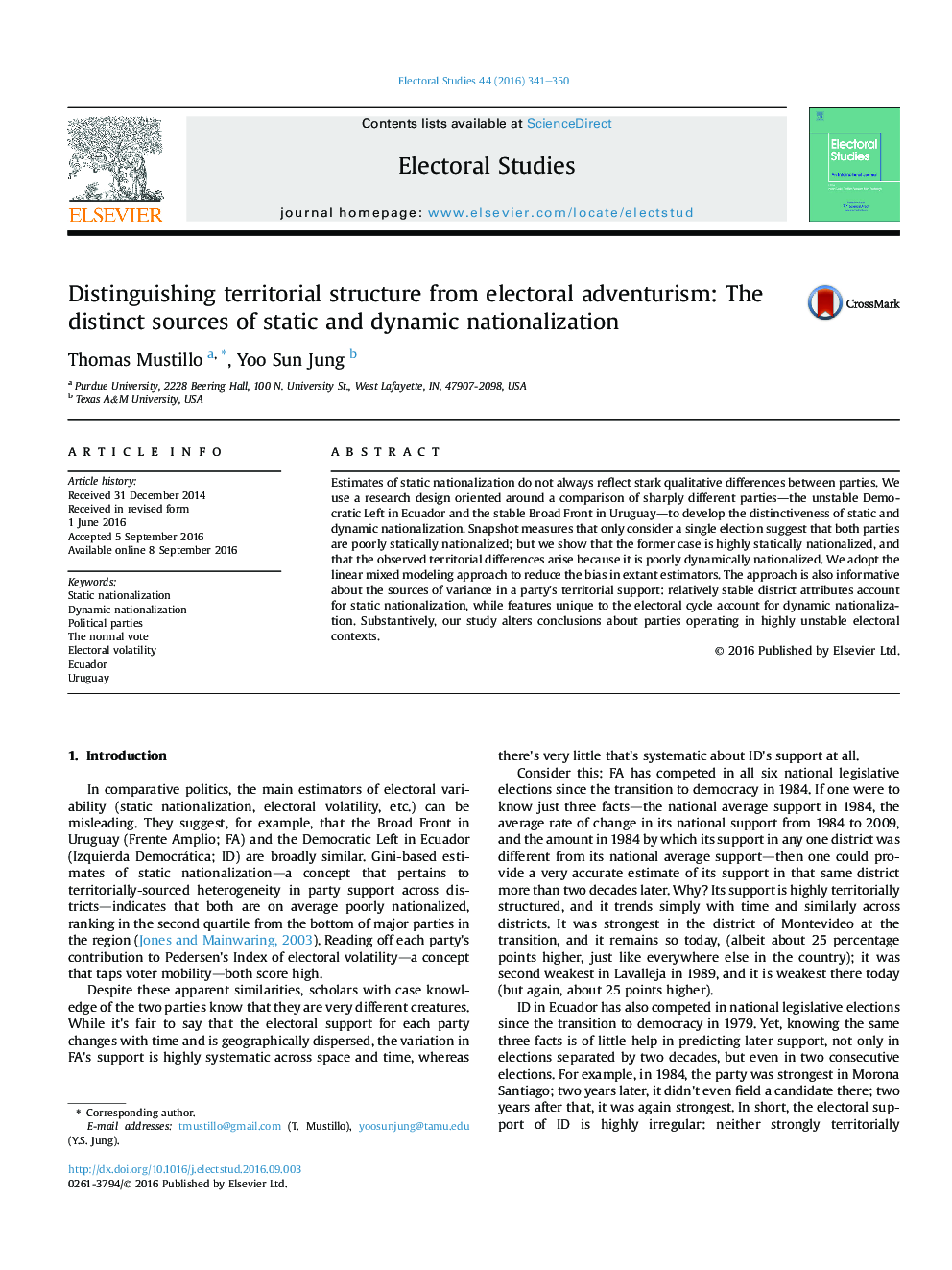| Article ID | Journal | Published Year | Pages | File Type |
|---|---|---|---|---|
| 7463402 | Electoral Studies | 2016 | 10 Pages |
Abstract
Estimates of static nationalization do not always reflect stark qualitative differences between parties. We use a research design oriented around a comparison of sharply different parties-the unstable Democratic Left in Ecuador and the stable Broad Front in Uruguay-to develop the distinctiveness of static and dynamic nationalization. Snapshot measures that only consider a single election suggest that both parties are poorly statically nationalized; but we show that the former case is highly statically nationalized, and that the observed territorial differences arise because it is poorly dynamically nationalized. We adopt the linear mixed modeling approach to reduce the bias in extant estimators. The approach is also informative about the sources of variance in a party's territorial support: relatively stable district attributes account for static nationalization, while features unique to the electoral cycle account for dynamic nationalization. Substantively, our study alters conclusions about parties operating in highly unstable electoral contexts.
Related Topics
Social Sciences and Humanities
Social Sciences
Geography, Planning and Development
Authors
Thomas Mustillo, Yoo Sun Jung,
